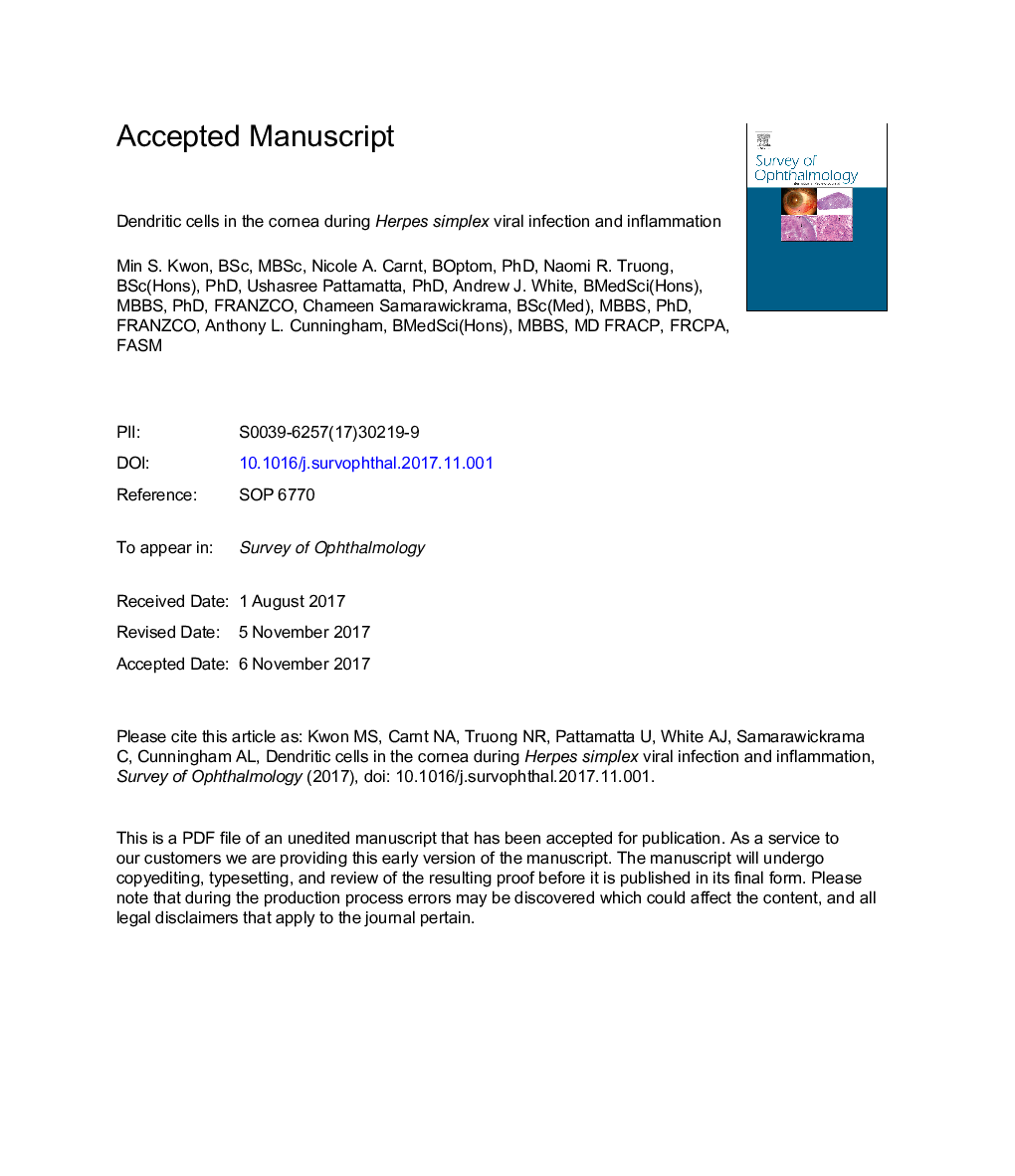| Article ID | Journal | Published Year | Pages | File Type |
|---|---|---|---|---|
| 8795181 | Survey of Ophthalmology | 2018 | 30 Pages |
Abstract
Herpes simplex keratitis is commonly caused by Herpes simplex virus type 1, which primarily infects eyelids, corneas, or conjunctiva. Herpes simplex virus type 1-through sophisticated interactions with dendritic cells (DCs), a type of antigen-presenting cell)-initiates proinflammatory responses in the cornea. Corneas were once thought to be an immune-privileged region; however, with the recent discovery of DCs that reside in the cornea, this long-held conjecture has been overturned. Therefore, evaluating the clinical, preclinical, and cell-based studies that investigate the roles of DCs in corneas infected with Herpes simplex virus is critical. With in vivo confocal microscopy, animal models, and cell culture experiments, we may further the understanding of the sophisticated interactions of Herpes simplex virus with DCs in the cornea and the molecular mechanism associated with it. It has been shown that specific differentiation of DCs using immunohistochemistry, flow cytometry, and polymerase chain reaction analysis in both human and mice tissues and viral tissue infections are integral to increasing understanding. As for in vivo confocal microscopy, it holds promise as it is the least invasive and a real-time investigation. These tools will facilitate the discovery of various targets to develop new treatments.
Keywords
Related Topics
Health Sciences
Medicine and Dentistry
Ophthalmology
Authors
Min S. BSc, MBSc, Nicole A. BOptom, PhD, Naomi R. BSc(Hons), PhD, Ushasree PhD, Andrew J. BMedSci(Hons), MBBS, PhD, FRANZCO, Chameen BSc(Med), MBBS, PhD, FRANZCO, Anthony L. BMedSci(Hons), MBBS, MD, FRACP, FRCPA, FASM,
